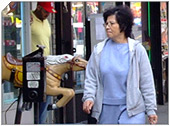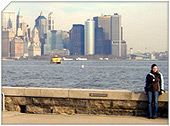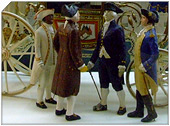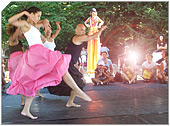Richmond Hill, Queens, New York City
|
Getting Started
Index
NYC Neighborhoods
Manhattan
Brooklyn
Queens
Bronx
Staten Island
NYC Icons
Chrysler Building
Flatiron Building
Empire State Building
Safe NYC
NYPD
FDNY
NYC Weather
NYC Climate
NYC Weather Forecast
Winter Season
Spring Season
Summer Season
Fall Season
NYC History & Politics
New York City History
Tammany Hall and Politics
New York City Politicians
New York City Personalities
Culture of Gotham City
Culture of the city
Cultural diversity
City in popular culture
|
Richmond Hill is a neighborhood in central-southern Queens, New York City, USA. It is bordered by Kew Gardens to the north, Woodhaven and Ozone Park to the west, South Ozone Park to the South and South Jamaica to the east.
History
The hill referred to as Richmond Hill was created by the glacier that formed Long Island when it melted, leaving behind huge piles of stones and rocks it had dragged across the continent.
Richmond Hill is rich in history. The Battle of Long Island, one of the bloodiest battles of the Revolutionary War, was fought in 1776 along the ridge now in Forest Park, near what is now the present golf course clubhouse. Protected by its thickly wooded area, American riflemen used guerilla warfare tactics to attack and defeat the Hessians.
Richmond Hill's name was inspired either by a suburban town near London, England, or because of Edward Richmond, a landscape architect in the mid-1800s who designed much of the neighborhood. In 1868, a successful banker named Albon P. Man bought the Lefferts and Welling farms, and hired Richmond to lay out the community.
Over the next decade streets, schools, a church, and a railroad were built, thus making the area one of the earliest residential communities on Long Island. The area is well known for its large-frame single family houses, many of which have been preserved since the turn of the twentieth-century. Many of the Queen Anne Victorian homes of old Richmond Hill still stand in the area today.
The area first became developed in 1918, when the BMT Jamaica Avenue elevated train line (today the J/Z lines of the New York City Subway) was extended in the neighborhood.
The Triangle Hofbrau was a restaurant which was frequented by such stars as Mae West in the 1920s and 1930's. It sat on the triangular piece of land bordered by Hillside Avenue, Jamaica Avenue and Myrtle Avenue. Near the northwest corner of Hillside Avenue and Myrtle Avenue sits an old time ice cream parlor, Jahn's. Not far away is Lefferts Boulevard which, with the other streets, defines the central core of Richmond Hill.
|
New York City Search
Quick NYC
|
|
|
 How safe is New York City?
How safe is New York City? Contrary to popular belief, the City consistantly ranks in the top ten safest large cities in the United States. The NYPD is the largest municipal police force in the world and has it's own Movie/TV Unit. |

New York has a humid continental climate resulting from prevailing wind patterns that bring cool air from the interior of the North American continent. New York winters are typically cold with moderate snowfall.  New York Weather Forecast New York Weather Forecast |

New York's two key demographic features are its density and diversity. The New York City metropolitan area is home to the largest Jewish community outside Israel. It is also home to nearly a quarter of the nation's South Asians, and the largest African American community of any city in the country.  Ethnic composition Ethnic composition |

New York Newspapers
 
|



 New York Weather Forecast
New York Weather Forecast
 Ethnic composition
Ethnic composition


















